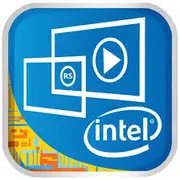Intel Core m3-6Y30

Intel Core m3-6Y30: Compact Power for Mobile Tasks
Analysis of a 2015 Processor in the Context of 2025
Architecture and Process Technology: A Foundation for Ultraportability
The Intel Core m3-6Y30 processor, released in 2015, became part of the lineup designed for ultrabooks and hybrid devices. Its Skylake architecture, built on a 14-nm process, allowed for reduced power consumption without significant loss of performance.
- Cores and Threads: 2 cores and 4 threads thanks to Hyper-Threading. Base frequency is 900 MHz, with a maximum in turbo mode of 2.2 GHz.
- Integrated Graphics: Intel HD Graphics 515 with 24 execution units and a frequency of up to 850 MHz. Supports 4K through DisplayPort and HDMI.
- Features: The chip is optimized for passive cooling, making devices thinner (up to 9 mm) and quieter. AVX2 instruction support enhances media content processing.
Despite its age, in 2025, such processors are still found in budget ultrabooks where battery life is prioritized over raw performance.
Power Consumption and TDP: Balancing Power and Efficiency
The 4.5 W TDP is a key feature of the Core m3-6Y30. This has enabled the creation of fanless laptops, such as the Microsoft Surface Pro 4 line.
- Thermal Profile: Under load, the chip briefly consumes up to 7 W but quickly returns to base values to avoid overheating.
- Comparison with Peers: 2015 counterparts, such as the AMD A6-8500P (15 W), lagged in energy efficiency but excelled in multi-threaded tasks.
For 2025, a 4.5 W TDP is modest (new Intel Core Ultra U-series have a TDP of 9–15 W), but it is sufficient for basic tasks.
Performance: What Can the Core m3-6Y30 Do in 2025?
Evaluation through the lens of modern demands:
- Office Tasks: Working with browsers (10+ tabs), Google Docs, or Microsoft 365 documents—the processor can handle it, but there may be lags when running Zoom simultaneously.
- Multimedia: Streaming 4K video (YouTube, Netflix) without lags. Photo editing in Lightroom—only basic adjustments.
- Gaming: CS:GO on low settings yields 25–30 FPS; Minecraft reaches 40–45 FPS. Modern AAA titles (Cyberpunk 2077, Starfield) are not accessible.
- Turbo Boost: In turbo mode, the frequency rises to 2.2 GHz but only for 10–15 seconds. For example, it helps quickly open a "heavy" PDF or launch an application.
Geekbench 6 (693/1364) shows that the chip even falls behind budget processors from 2025, like the Intel N100 (1100/3200), but it is sufficient for web surfing and text work.
Use Scenarios: Who is This Processor Suitable For?
1. Students: For lectures, writing essays, and watching classes.
2. Office Workers: Dealing with emails, spreadsheets, and presentations.
3. Travelers: Lightweight laptops under 1 kg (e.g., ASUS ZenBook UX305) with battery life of 8–10 hours.
Not Suitable For: Gamers, video editors, engineers working in CAD.
Battery Life: How Does 4.5 W TDP Affect Operating Time?
Laptops with the Core m3-6Y30 were equipped with 35–45 Wh batteries, providing:
- 10–12 hours of web surfing (brightness 50%, Wi-Fi).
- 6–8 hours of video playback.
Power-Saving Technologies:
- Speed Shift: Dynamic frequency management to reduce latency.
- C-states: Putting unused cores into a "sleep mode."
In 2025, even budget processors (like Qualcomm Snapdragon 8cx Gen 3) offer up to 20 hours of battery life, but devices with the Core m3-6Y30 remain relevant due to their low price.
Comparison with Competitors: Who Was Stronger?
- Intel Core i5-7200U (2016): 2 cores/4 threads, TDP 15 W, Geekbench 6 ~900/1800. More powerful, but requires active cooling.
- AMD A9-9410 (2016): 2 cores, TDP 15 W, Radeon R5 Graphics. Better for gaming, but battery life is 30% lower.
- Apple M1 (2020): Comparison is not fair due to differences in architecture, but M1 is 5–7 times faster.
Conclusion: In its class (4.5 W), the Core m3-6Y30 was optimal, but by 2025, it is outdated even against Intel Alder Lake-Y (2022).
Pros and Cons: Is It Worth Getting in 2025?
Pros:
- Silent operation (no fan).
- Affordable price: laptops starting at $400 (new, e.g., Chuwi Minibook X).
- Support for Windows 11 (requires TPM 2.0, but some models have it).
Cons:
- Weak for multitasking.
- No support for Wi-Fi 6 or Thunderbolt 4.
- Limited upgradeability: RAM and SSD are often soldered.
Recommendations for Choosing a Laptop
1. Device Type: Ultrabooks (Dell XPS 12), convertibles (Lenovo Yoga 710).
2. Memory: At least 8 GB of RAM and 256 GB SSD.
3. Screen: IPS display with a resolution of 1920×1080.
4. Ports: USB-C with charging support, HDMI for projectors.
Examples of 2025 Models:
- HP Pavilion 11 x360: $550, 8 GB/256 GB, touchscreen.
- ASUS VivoBook Flip 14: $500, 12-hour battery life.
Final Conclusion: Who is the Core m3-6Y30 For?
This processor is suitable for those who:
- Seek an ultra-light and quiet laptop.
- Do not plan to run "heavy" applications.
- Have a budget constraint ($400–$600).
Key Benefits: battery life, portability, price. However, in 2025, it is better to consider it as a temporary solution or a secondary device for travel. For serious work, consider Intel Core Ultra 5 125U or Apple M3 processors.
Basic
CPU Specifications
Memory Specifications
GPU Specifications
Miscellaneous
Benchmarks
Compared to Other CPU
Share in social media
Or Link To Us
<a href="https://cputronic.com/en/cpu/intel-core-m3-6y30" target="_blank">Intel Core m3-6Y30</a>